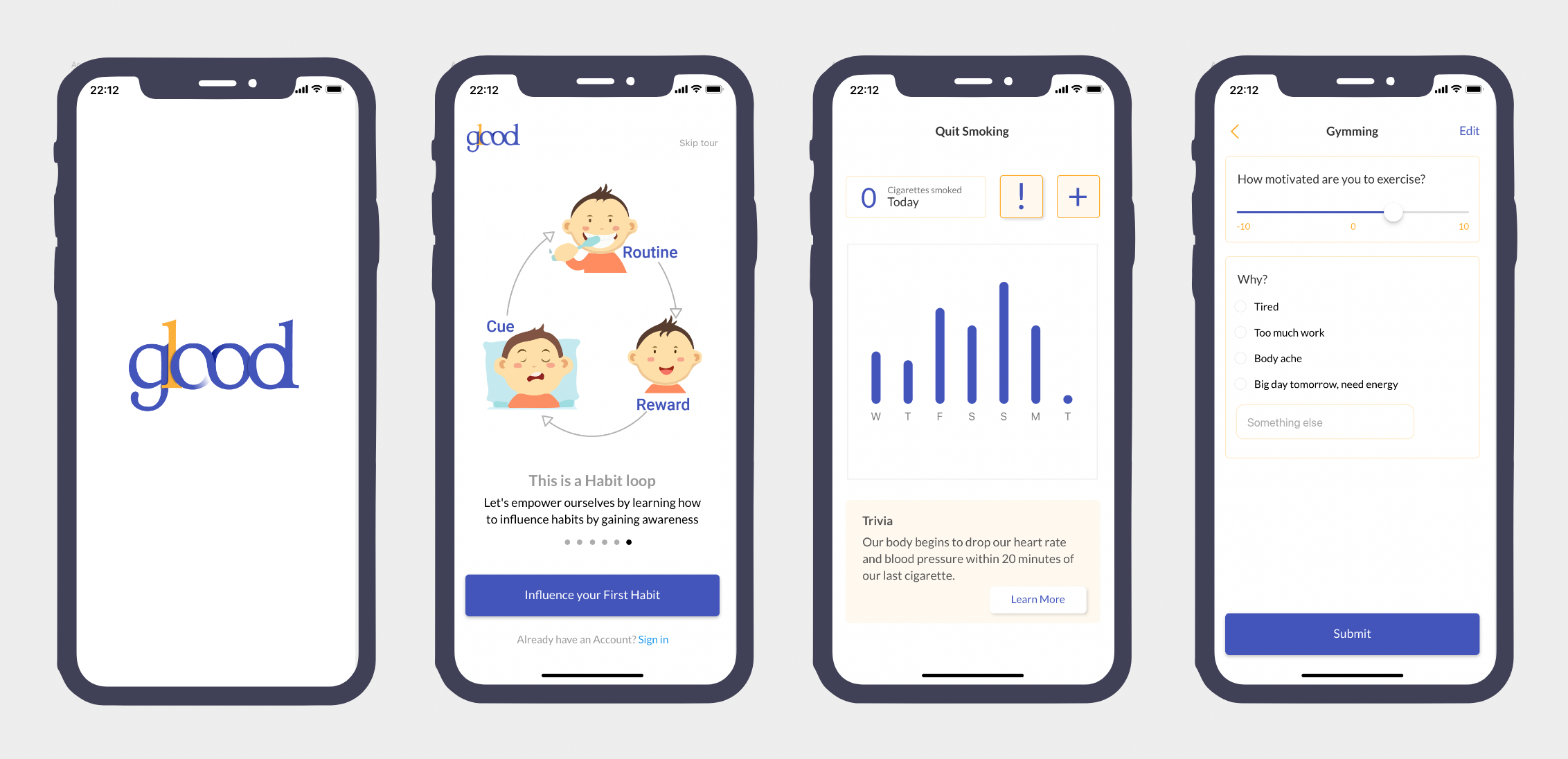Habits
Mobile Application
February 2019 - June 2019

Premise
Glood (ɡluːd) is an app that uses data analysis to generate report and personalise content to promote
Mindfulness & Self realisation
It does not work on building an individual’s motivation. It only works towards helping
the user bring back the awareness that has been lost due to habit formation.
Glood focuses on making interventions at the point of craving to prompt the user to change the routine in the habit while the cue and reward remain the same.
Why Research Habits?
This project originated from my intrigue towards the subject of habits.
I bit my nails since I was 5 years old. When I turned 21, it took me a year of conscious effort to get rid of the habit.
I didn’t know how I did it. Nor was I aware of what led me to being able to do it after countless failed attempts.
Apart from answering these questions, my research answered quite a few others that I’ve had in the past as well. Like why smoking (drinking etc.) was so difficult a ‘habit’ to get rid of. Why does regular visits to the gym bring such joy to some people while others can’t continue for long? What is that element in seasoned athletes that gives them the edge?
Apart from answering these questions, my research answered quite a few others that I’ve had in the past as well. Like why smoking (drinking etc.) was so difficult a ‘habit’ to get rid of. Why does regular visits to the gym bring such joy to some people while others can’t continue for long? What is that element in seasoned athletes that gives them the edge?

Secondary Research
A Habit is a settled and regular tendency or practice, that makes any behaviour automatic
through repetition.
Habit formation is explained by a Habit loop that begins with a trigger/cue. When you wake up in the morning, the plaque causes discomfort in your mouth. You brush your teeth almost automatically while thinking about your day. You are later rewarded with a good minty flavour of the toothpaste in your mouth.
As a certain habit is repeated, we tend to loose awareness of actually performing the routine of the habit, while simultaneously craving for the reward when the cue occurs.
Habit formation is explained by a Habit loop that begins with a trigger/cue. When you wake up in the morning, the plaque causes discomfort in your mouth. You brush your teeth almost automatically while thinking about your day. You are later rewarded with a good minty flavour of the toothpaste in your mouth.
As a certain habit is repeated, we tend to loose awareness of actually performing the routine of the habit, while simultaneously craving for the reward when the cue occurs.

Primary Research
Contextual Inquiry
Semi-structured interviews were conducted to obtain information about the understanding of
habits amongst the people around me, where they were first asked a set of standard questions and then
observed and questioned while they worked in their own environments. Many of them were people I spent
most of my time with so that I could observe them on a daily basis.
Eventually they were asked to become my research participants.
This led me to some interesting insights:
This led me to some interesting insights:
Persistence is the most important
Acceptance that being persistent towards your goal of habit change or formation is more
important than consistency in your actions.
Forgiveness (picking up from where we left)
It is difficult to forgive oneself if there is an inconsistency in adherence of methods and
follow-ups.
Overambitious behaviour
When people plan, they expect quick changes and outputs, which leads to slip ups quite often
Companion
A companion with a similar aim might or might not be beneficial. There is more to the concept and it needs more research.
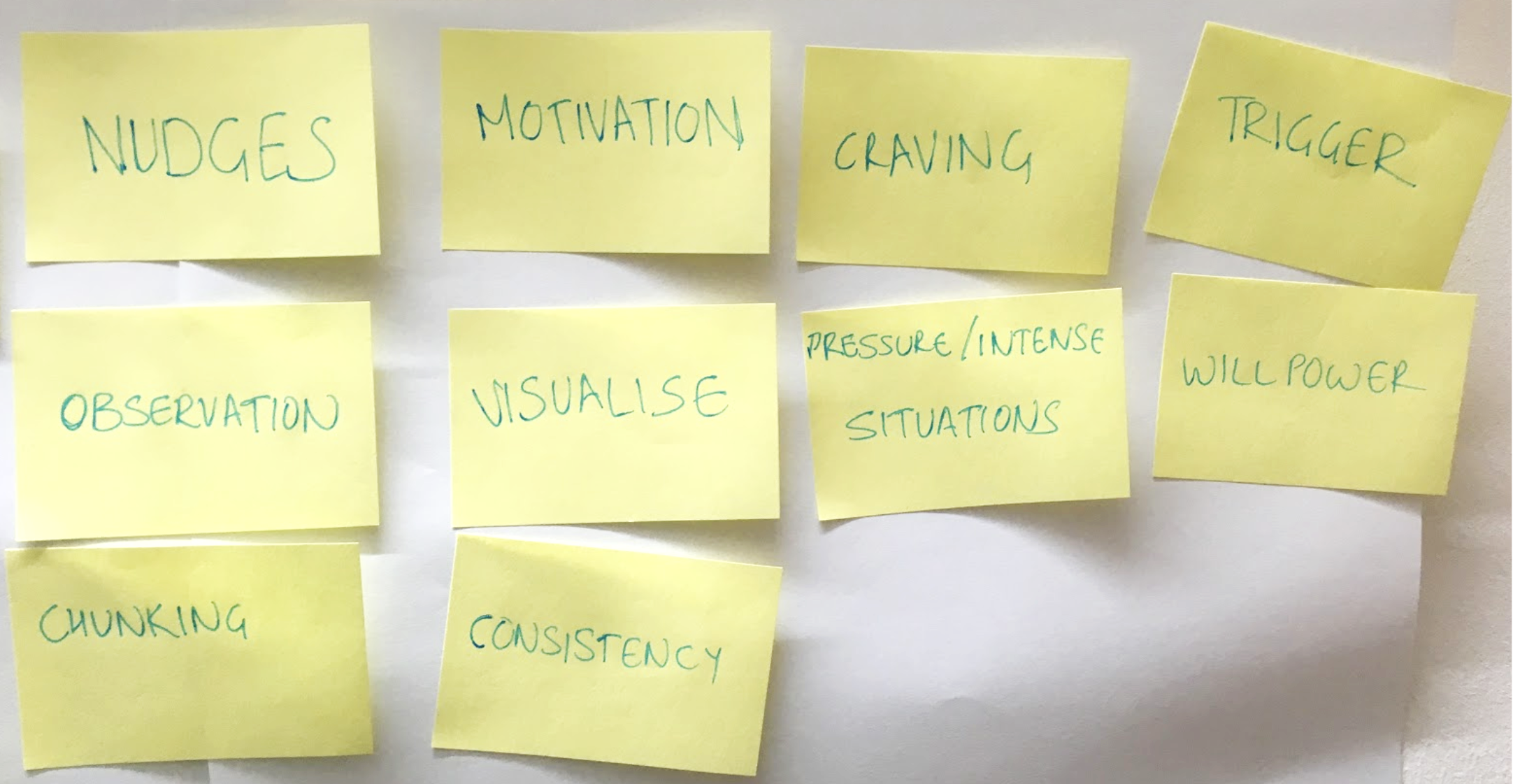
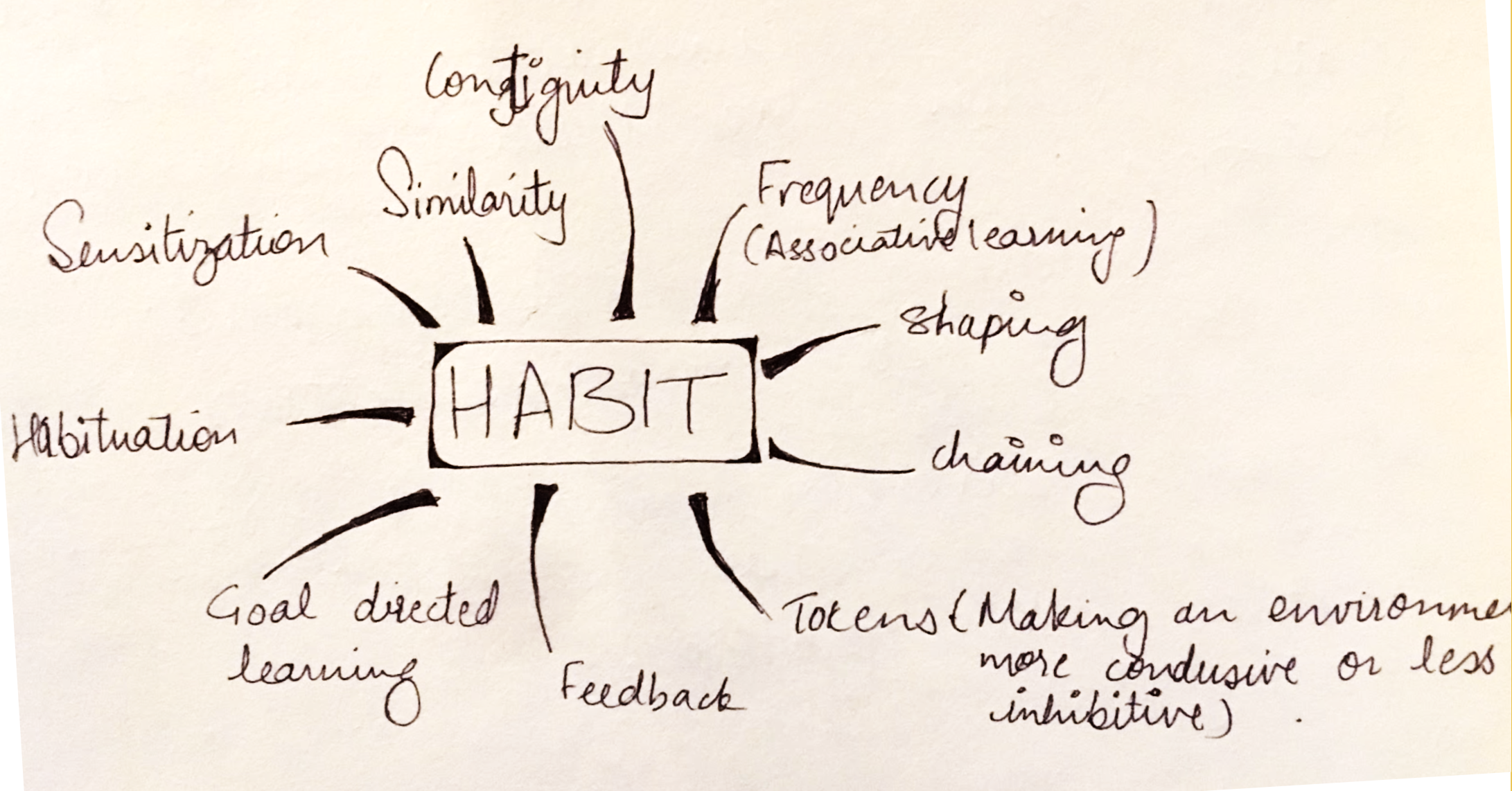
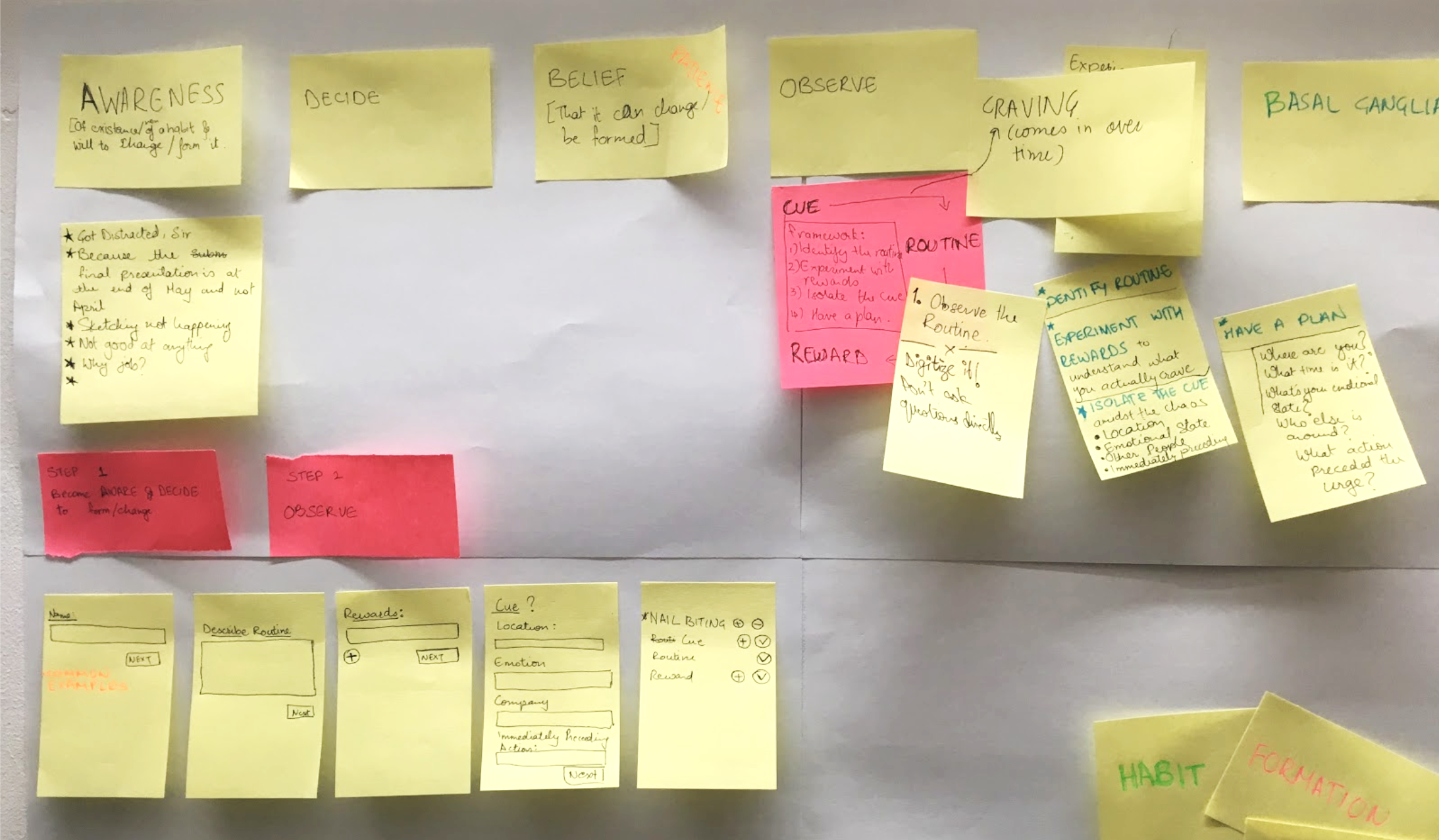
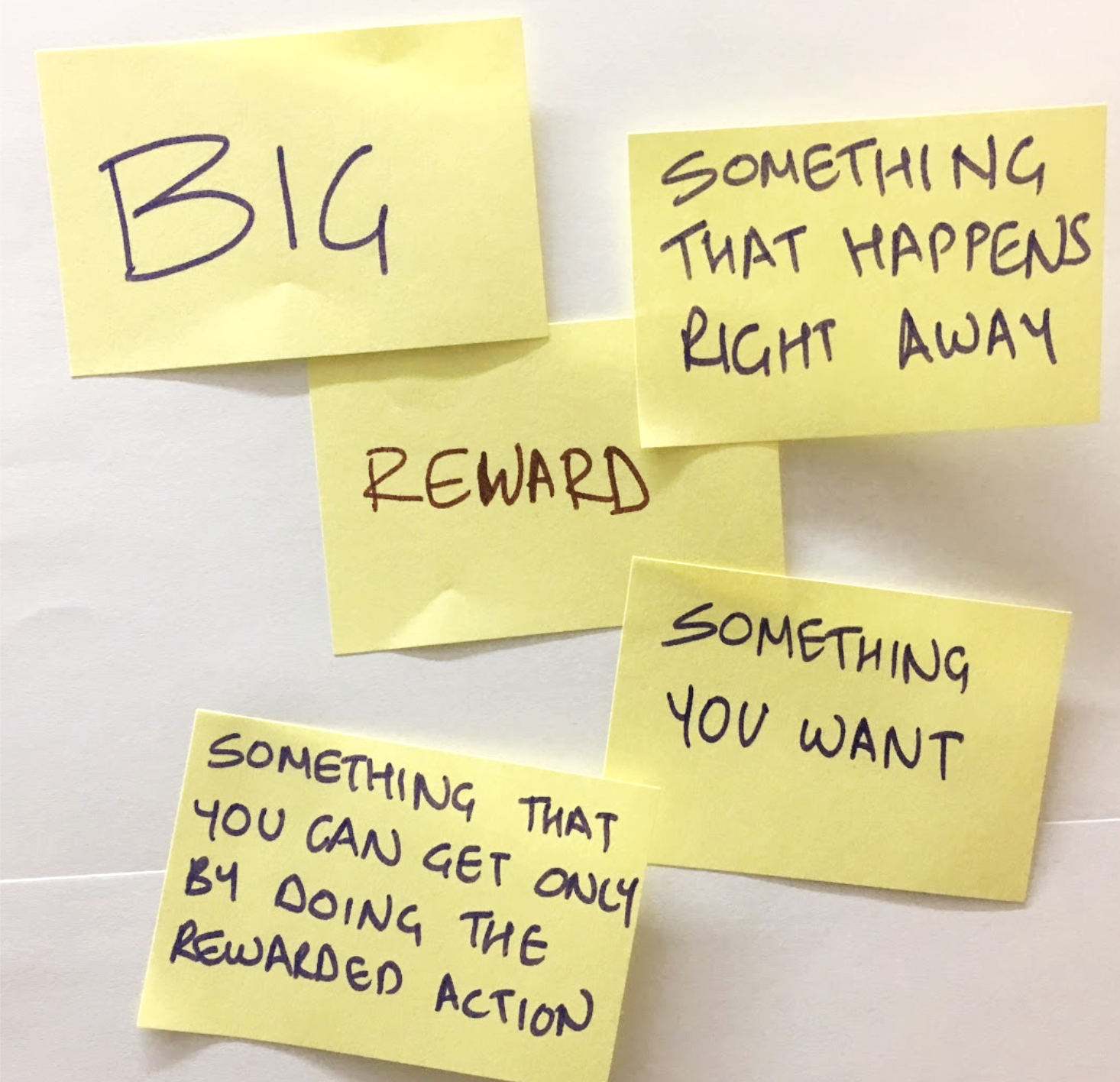
Problem Statement
How might we bring awareness to users about their Habit loops and help them in being persistent
The wireframes were the beginning of giving a physical form to the concept development.
Here, the whole process was dependant on the user's inputs, as I wanted to understand what it is that
came easily to the user and what needed understanding.
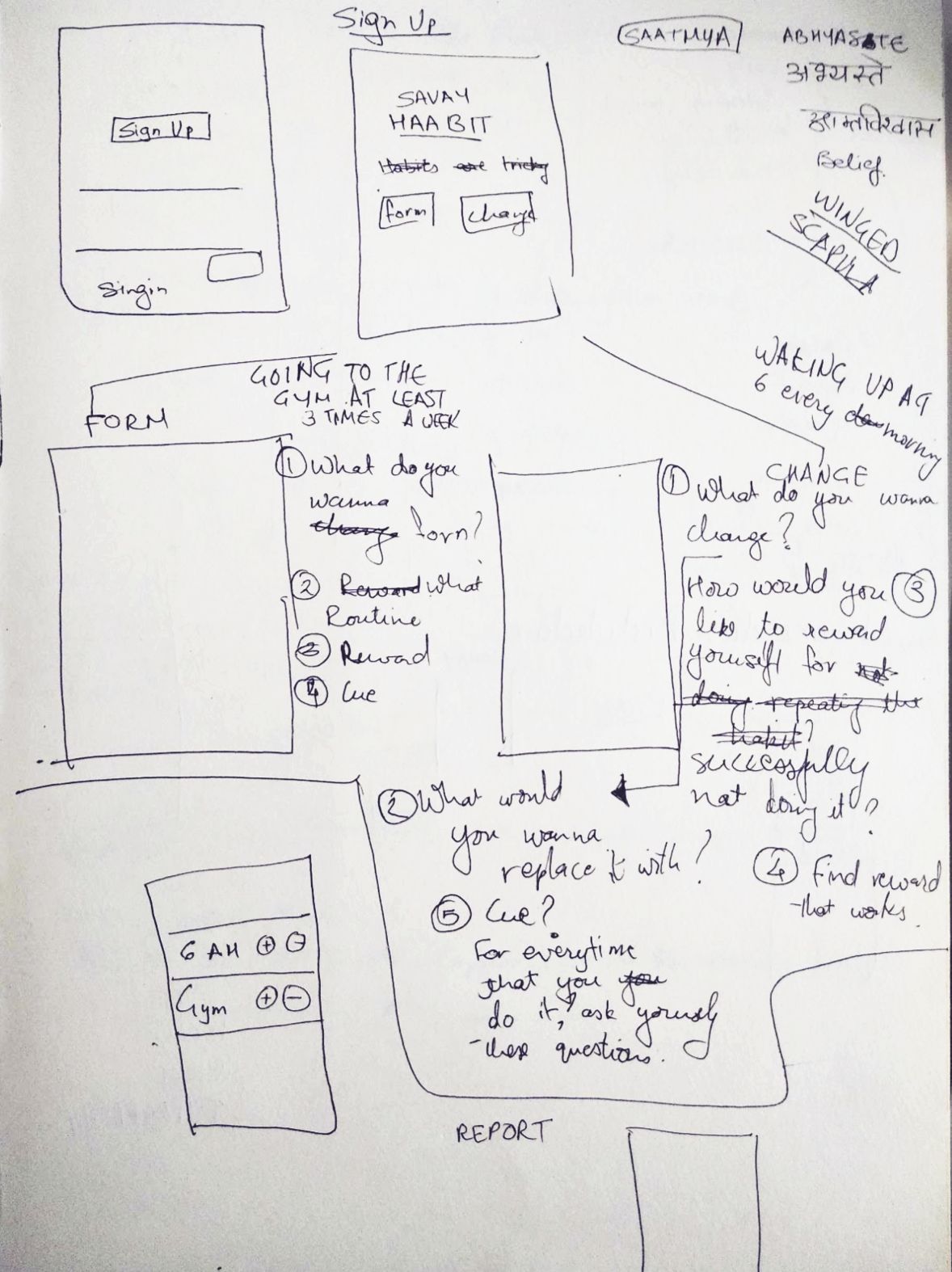

Information Architecture
After reviewing the approach, the Information Architecture was iterated quite a few times.
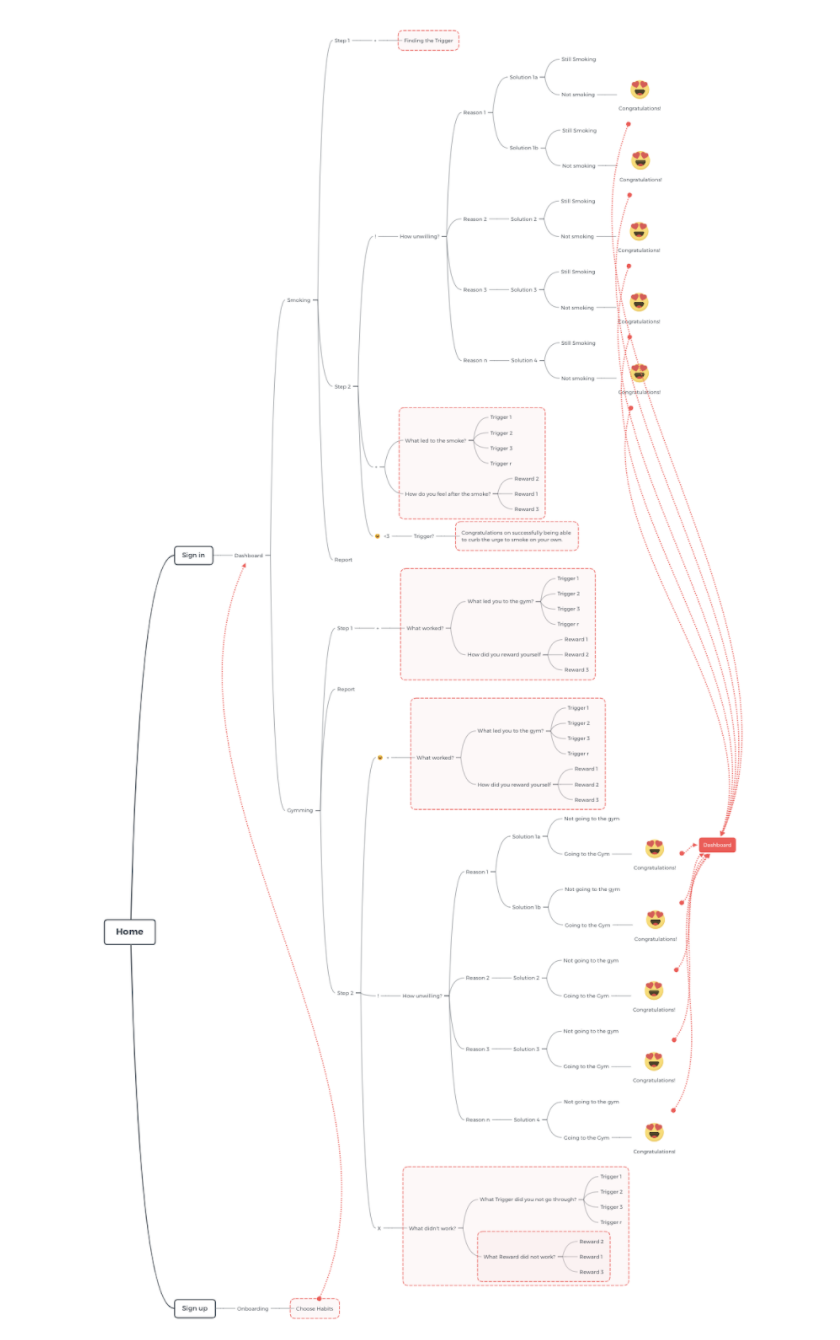
Previous version
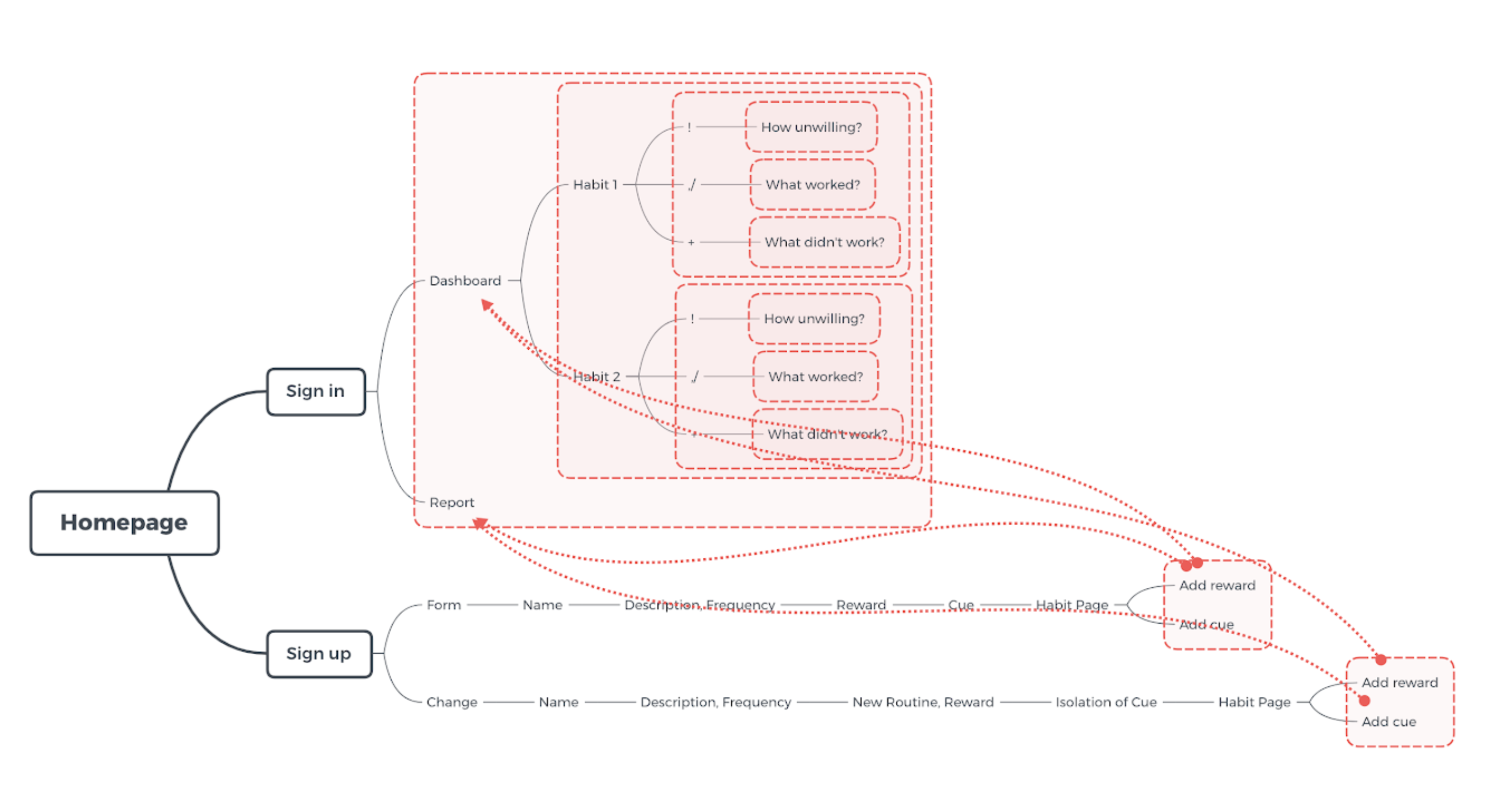
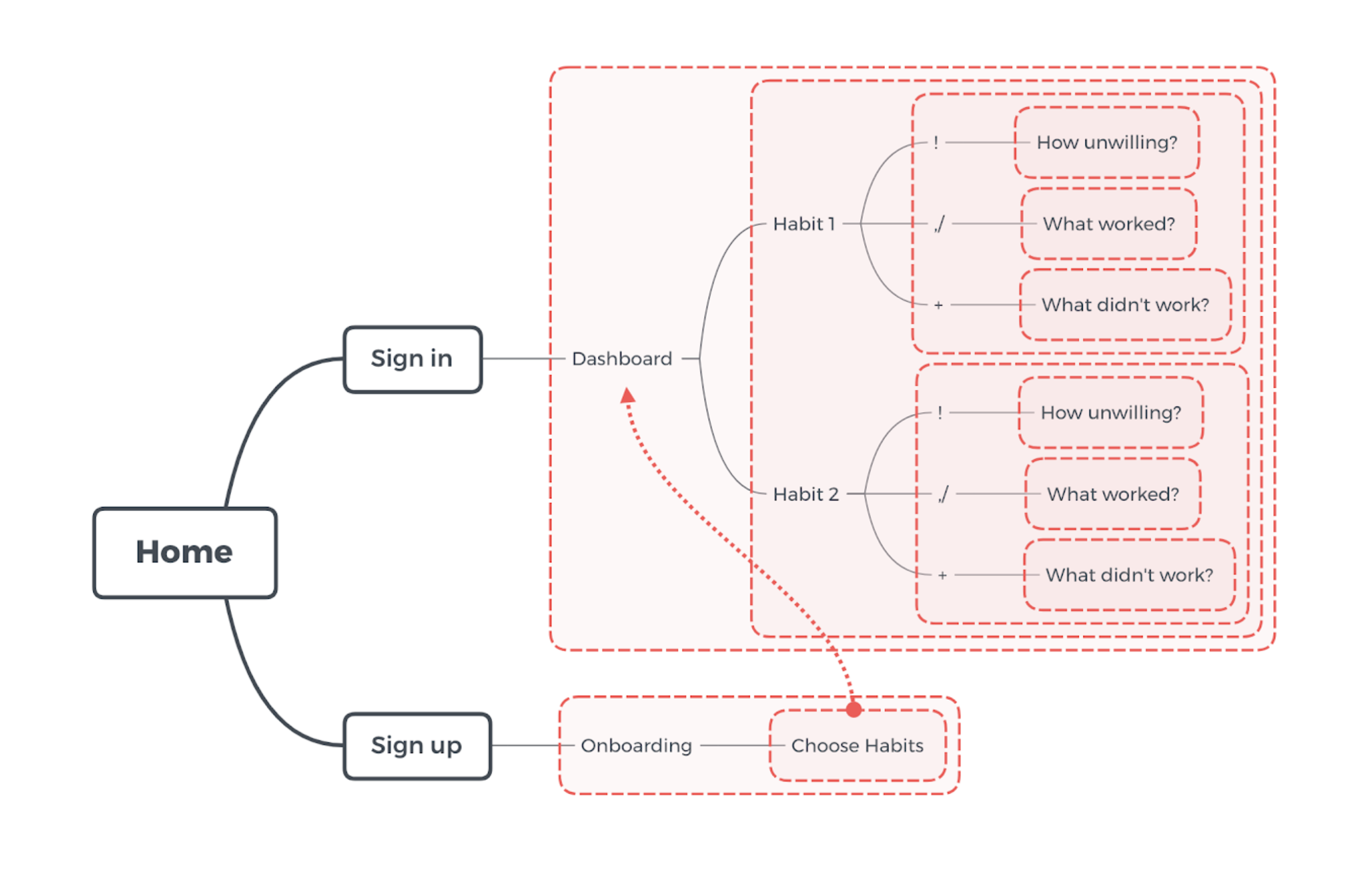
Mock up 1.0
With insights from the wireframes, the flow was modified according to the user's understanding.
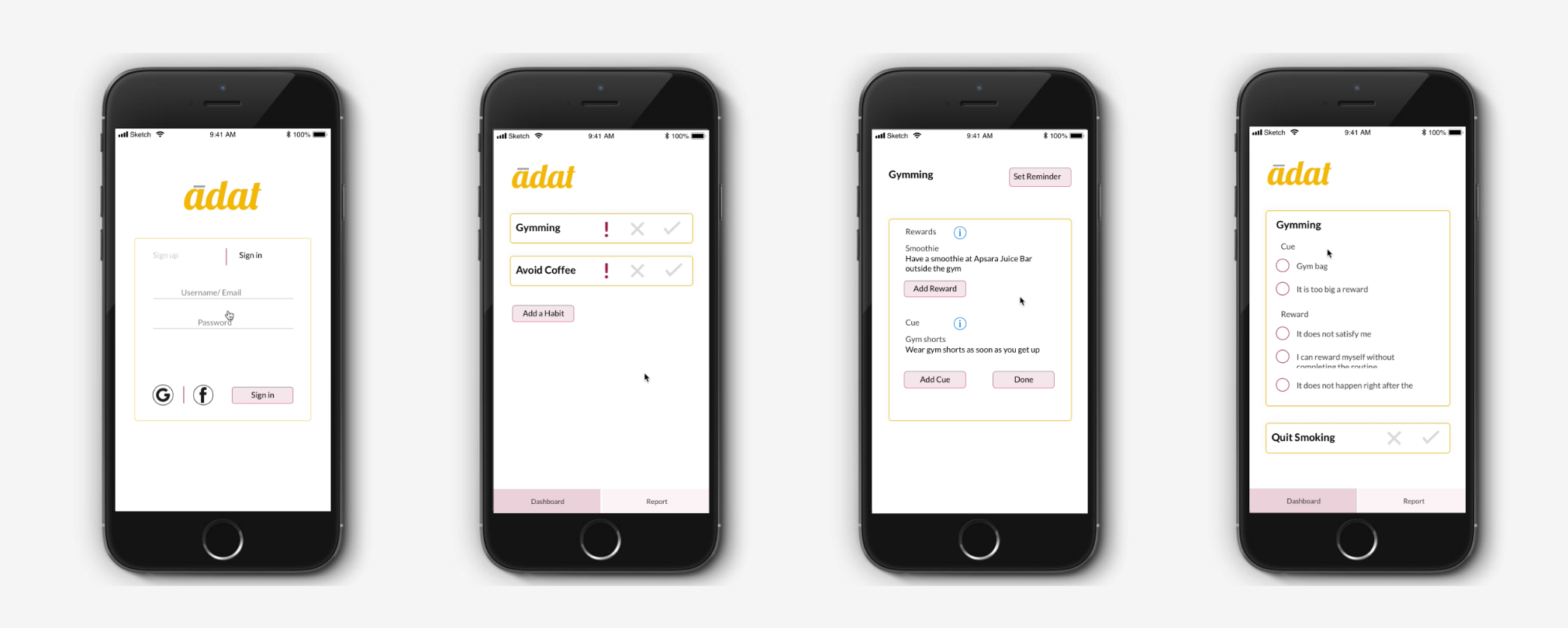
User Testing
- Onboarding can't go wrong. The key lies there
- A video explanation is not enough for onboardingUsers are unable to grasp the concept of a habit loop through only onboarding process.
- Users did not understand the process at all, nor did they understand how to use the app.
- Usage of the term ‘cue’ not appreciated. Should be replaced with ‘trigger’ for better understanding
- The UI needed more effort to be put in
This is where the approach was reworked on completely. The focus shifted from wanting to make the user
understand the workings of a habit to trying to aid the realisation of the 'cue' which will eventually bring in the understanding
of the process. The explaination had to be given in bits which will eventually bring in the realisation.
Mock up 2.0
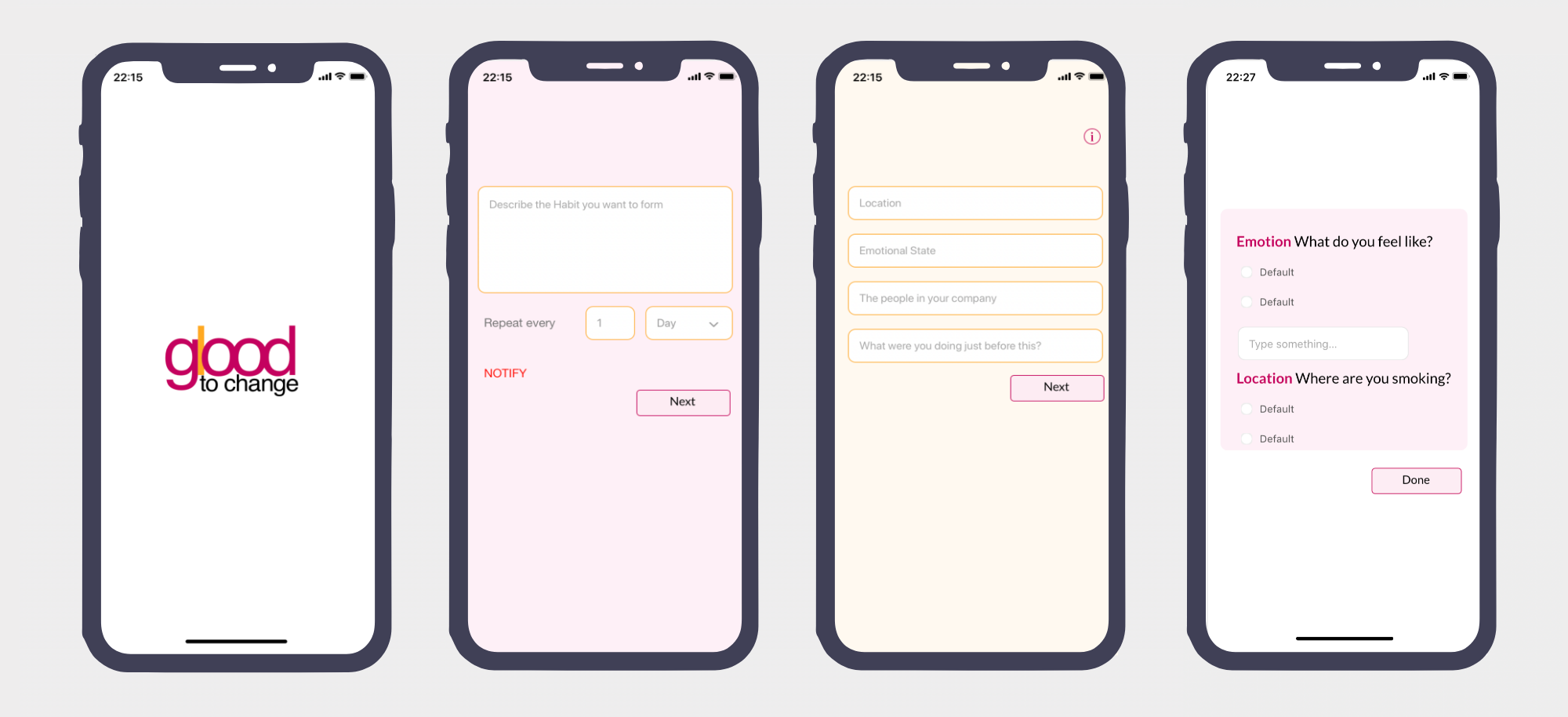
Expert Review
After an extensive conversation with experts around me, I got many interesting insights
and a direction for the project, which was lost in all the previous explorations:
- Start with an example
Onboarding could be made easier using an example - The Tone of language used needed change
- Habits as a whole becomes a large problem to solve, the scope needs to narrow down
- Choice leads to confusion
- Data analysis can play an important role if done well
- The solution is not novel
User Testing 2.0
I asked two smokers to note down every smoke they had during a period of 30 days and whether noting down
the details brought in the awareness necessary to quit, while also helping the user narrow down on
the trigger for their smoking habit. One of the two users was motivated to quit and did the exercise
diligently, while the other was quite lenient with the exercise.Insights from the two user’s behaviour helped informing the flow of the app.
Since 'motivation' required it's own level of research, I decided to keep my focus narrowed down on people who have the motivation necessary to quit a habit.
Since 'motivation' required it's own level of research, I decided to keep my focus narrowed down on people who have the motivation necessary to quit a habit.
